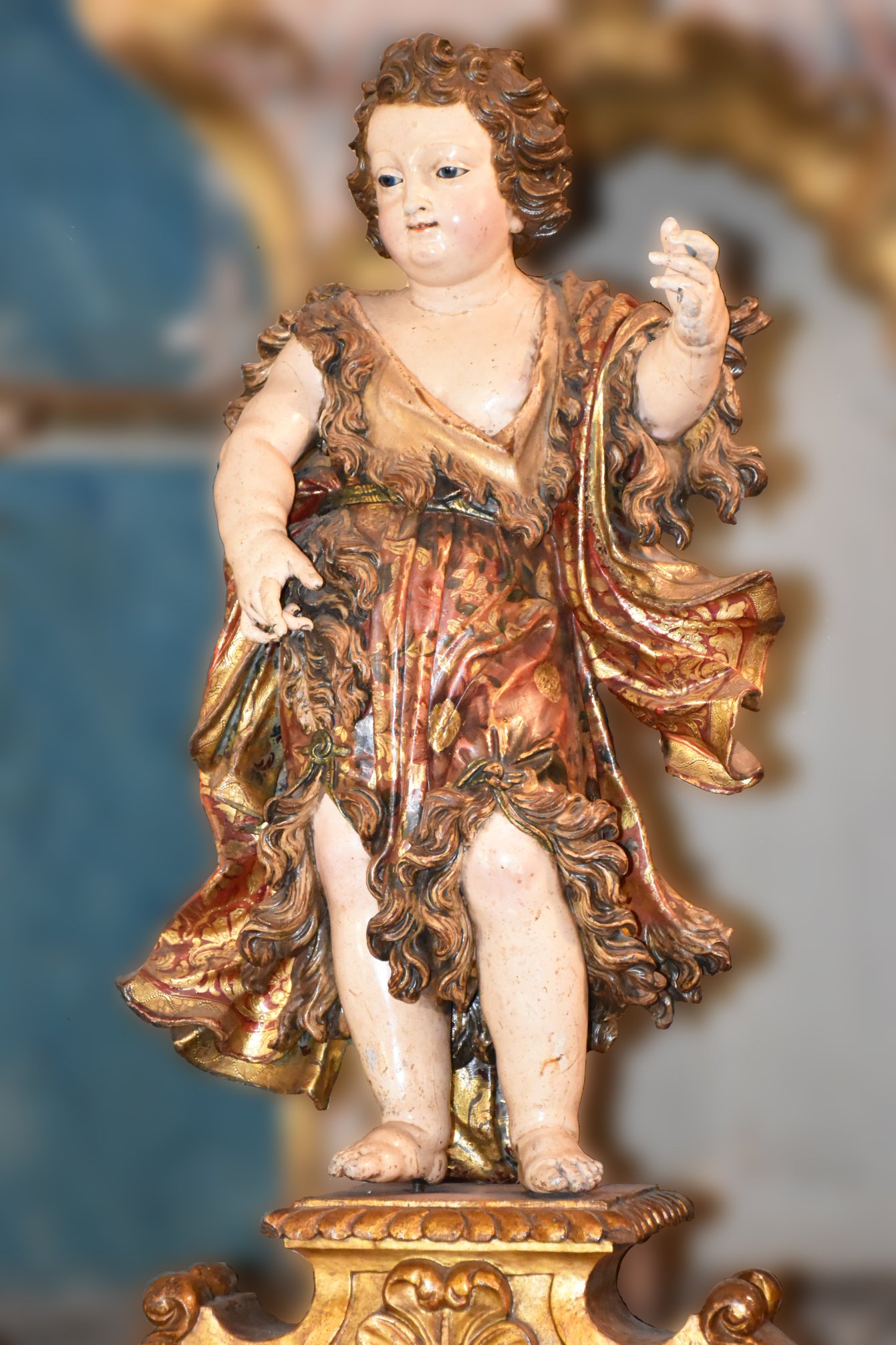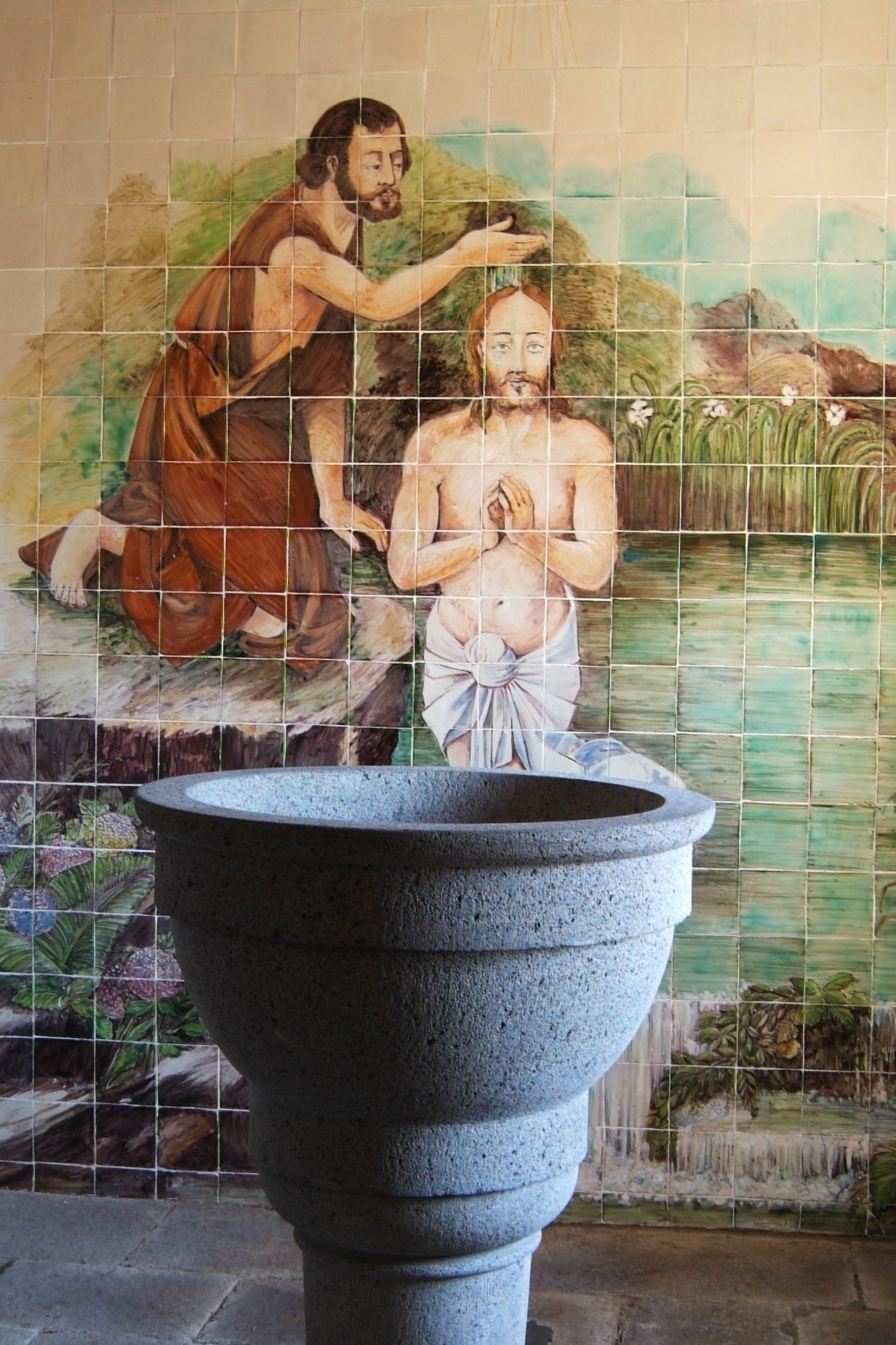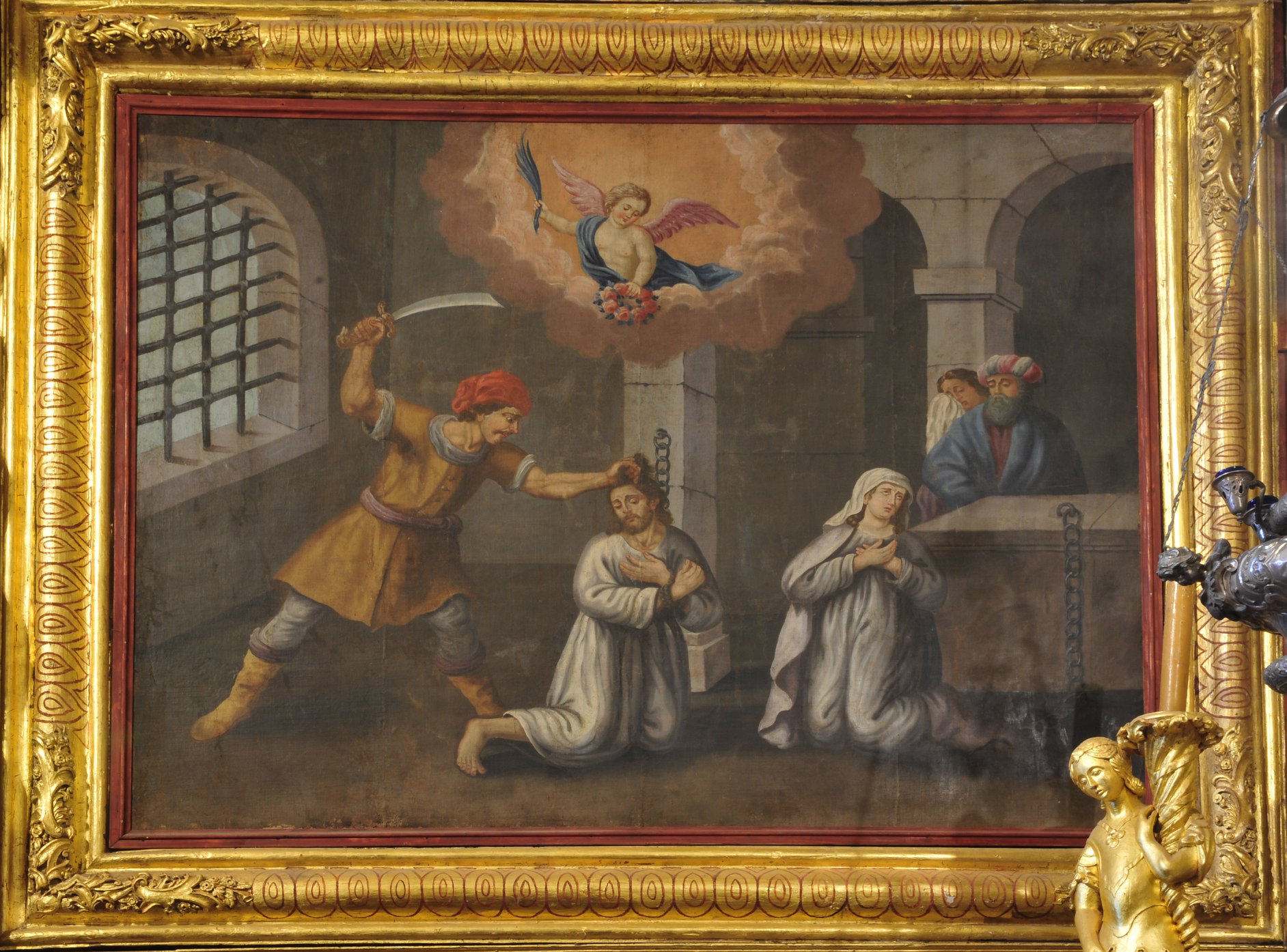Popularly known as “São João”, his birth feast is celebrated on June 24, making him the only saint in which the birth anniversary is celebrated.
As “Santo Popular” lives up to its name by being widely celebrated and represented through sculptures, paintings and tiles in Madeira's churches and chapels, in addition to the numerous tile panels on the facades of private houses.
“São João” is usually represented as a child, alone or integrated in the “Sagrada Familia”, or in adulthood, usually in the act of Christ's Baptism. Normally, he wears a lambskin, sometimes accompanied by a red tunic, symbolizing his martyrdom and introducing himself with a lamb that symbolizes Jesus Christ, the Agnus Dei - Lamb of God, which “João Baptista” announced with the expression: "Here is the Lamb of God, the one who takes away the sin of the world". In her adult life, representations of her martyrdom and Jesus' baptism in the Jordan River are common, the latter theme positioned in the baptismal chapels.
One of the oldest places of his devotion, in Madeira, is located in the chapel of “São João da Ribeira”, in the parish of São Pedro - Funchal, where by license of April 28, 1450 a license was granted for the creation of a Franciscan hermitage.. The chapel was rebuilt in 1720, extending the ornamental works throughout the 18th century.
In Madeira, São João Batista is the patron of four parishes: Fajã da Ovelha (created in the 1st half of the 16th century, the current church being built during the second half of the 18th century); São João - Ribeira Brava (created in 1960); Álamos - Funchal (created in 1960 and a church dedicated to São João Batista on September 26, 2004); and Atouguia - Calheta (a chapel built in 1783, also known as S. Pedro de Alcântara, was the headquarters of the parish created in 1960, passing on June 24, 2012 for the new church). Some chapels are also dedicated to São João Batista, such as: “no lombo de São João” - Ponta do Sol (construction of the second half of the 17th century); “no sítio de Serrado da Adega” - Câmara de Lobos (founded in 1700); “no lobo do Doutor” - close to the village of Calheta (founded in 1651, rebuilt in 1770, currently in ruins); and at “Terra Baptista” - Porto da Cruz (built between 1987 and 1989). Other chapels erected, in their invocation, were demolished as: “Fortaleza do Pico” - Funchal (garnished around 1730 and demolished in 1940/1950; de Santana (founded in 1660); and the Campanário (instituted in 1728).
In addition to the religious celebration, during the festivities of São João it is habit to decorate public fountains, jump over bonfires and before dawn, on June 24, water is kept and plants are harvested, because at that time of day, these elements are blessed. That day is a municipal holiday in Porto Santo and Calheta and they take place, on the same day or on a very close one, as “Marchas de São João”.
We present two sculptures, one from “São João Batista Menino”, from the chapel of “São João da Ribeira”, and another as an adult, from the church of “Fajã da Ovelha”. Still a panel of tiles, from the church of “Santo António da Serra” and a painting from the church of “São Jorge”.
Text: Paulo Ladeira





